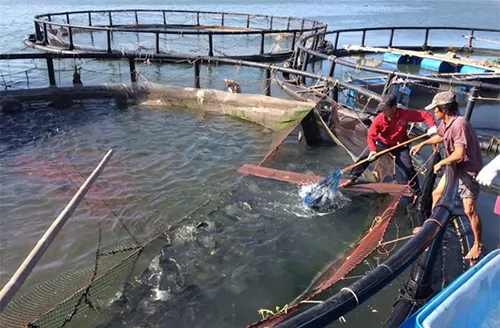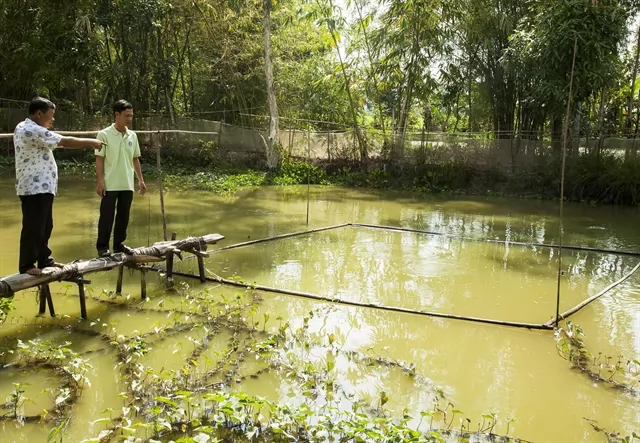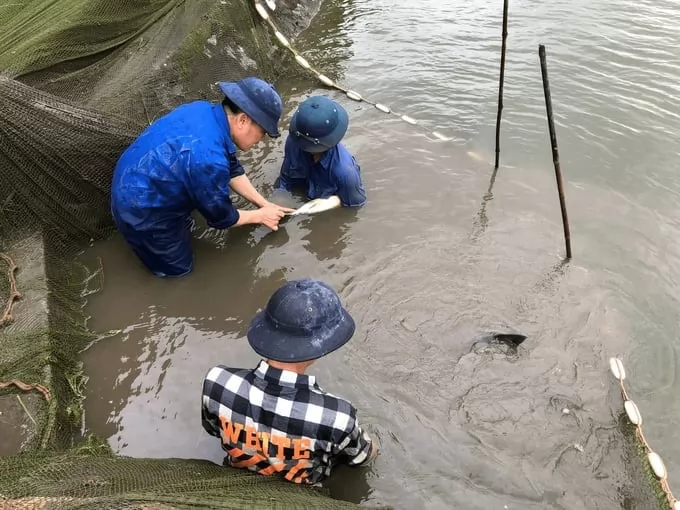Prolonged rain and waste caused mass fish death on La Ngà River: official

Fish cages on La Ngà River, southern province of Đồng Nai become empty after the mass fish death happened in the middle of this month. Local fish farming households had to sell the fish cages to pay debts. — VNA/VNS Photo Lê Xu
ĐỒNG NAI — Changes to the water environment on the La Ngà River in southern province of Đồng Nai have been blamed for the death of nearly 1,000 tonnes of fish this month, provincial officials have said.
Vice chairman of Đồng Nai Province People’s Committee Võ Văn Chánh said on Monday that as soon as the mass fish death on the river in the province’s La Ngà and Phú Ngọc Communes was reported, the Southern Environment Observation Centre, Zone VI Animal Health Department and the province’s Environment Department took water samples.
Test results showed the concentrations of ammonia, nitrite and the chemical oxygen demand (COD) in samples were in excess of levels allowed in aquaculture farming, Chánh said.
Director of the province’s Agriculture and Rural Development Department Huỳnh Thành Vinh said rain lasting from May 15 to early morning of May 16 made waste flow into the river, lowering the dissolved oxygen content in the river’s surface water, killing the fish.
The concentration of ammonia in water river samples was 4-7 times higher than permitted, the nitrite concentration 2-3 times higher than permitted and the COD concentration 3-16 times higher than permitted.
Moreover, testers found no signs of common diseases or infectious diseases that freshwater fish tend to contract.
According to the department, last June, more than 1,900 tonnes of fish from 132 local households were found dead along the 5km La Ngà River after heavy downpours.
The low oxygen level in the water and the high density of fish were reported as the main cause of the mass deaths at that time.
Pollution from upstream areas swept down by the rains worsened the incident.
As of last December, the provincial People’s Committee had spent more than VNĐ12 billion (US$516,000) to support affected households in Phú Ngọc and La Ngà communes.
Nguyễn Văn Khoái, a fish farmer in Phú Ngọc Commune, said breed fish on the river was his family’s livelihood for 14 years but in the last two years, he lost hundreds of millions of Vietnamese đồng and was in debt because of the mass fish death.
“After last year’s mass fish death, I borrowed more than VNĐ100 million to buy breeding fish to resume farming. Now, I owe VNĐ300 million more for buying feed for the fish,” Khoái said.
He said he had to sell all the fish cages that his family had to cover the debt but it was not enough.
“After handing the fish cages to the buyer, we’ll go onshore, rent a house and seek a job,” Khoái said.
Vinh said the department planned to help fish farming households who were affected by the recent mass fish death.
Deputy Prime Minister Trương Hoà Bình later yesterday asked for further investigation into the cause of the mass fish death and hand out appropriate punishments to those who violated the laws.
Binh also ordered Đồng Nai authorities to review the major sources of waste discharged into the La Ngà River, particularly giving focus to the cases that received complaints from the public.
A thorough report is expected to be submitted to Prime Minister before June 30. — VNS
Maybe you are interested

Farmers use advanced techniques to breed fish in cages
VietNamNet Bridge – Farmers who breed marine fish in floating cages in Vung Tau City in the southern province of Ba Ria-Vung Tau are using new advanced farming techniques with good results.

Mekong district seeks to expand giant barb farming
KIÊN GIANG - Giồng Riềng District in Kiên Giang Province is expanding a breeding model for cá hô, or the giant barb, that offers farmers high incomes.

A place that supplies 10 million aquatic breeds every year
Hai Phong is a coastal city with many potentials and advantages in developing the fisheries economy, so aquatic breed production is of interest.





